Question
Who among the following person sits second to the right
of the one who faces the one who likes White? Study the following information carefully and answer the questions given below. Eight persons are sitting in two parallel rows facing towards each other. In row 1 – A, B, C, and D are sitting and facing towards north while in row 2 – P, Q, R, and S are sitting and facing towards south, but not necessarily in the same order. They like different colours – Red, Yellow, Green, Blue, Black, Orange, White and White. Only one person sits between A and the one who faces the one who likes white, who doesn’t sit at the ends of the row. D sits immediate right of the one who faces the one who likes white. Only one person sits between Q and the one who faces D. P is the only neighbour of the one who faces the one who likes yellow, who doesn’t face Q. C sits second to the left of the one who faces the one who likes red, which is not liked by R. The one who likes green sits to the left of C, who doesn’t like orange. D neither likes blue nor white. As many persons sit to the right of B as to the left of the one who likes orange.Solution
We have, Only one person sits between A and the one who faces the one who likes white, who doesn’t sit at the ends of the row. D sits immediate right of the one who faces the one who likes white From this condition, there are two possibilities 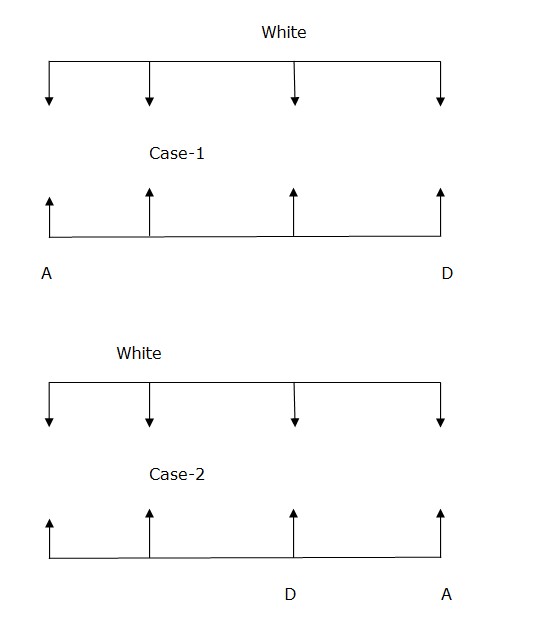 Again we have, Only one person sits between Q and the one who faces D. P is the only neighbour of the one who faces the one who likes yellow, who doesn’t face Q.
Again we have, Only one person sits between Q and the one who faces D. P is the only neighbour of the one who faces the one who likes yellow, who doesn’t face Q. 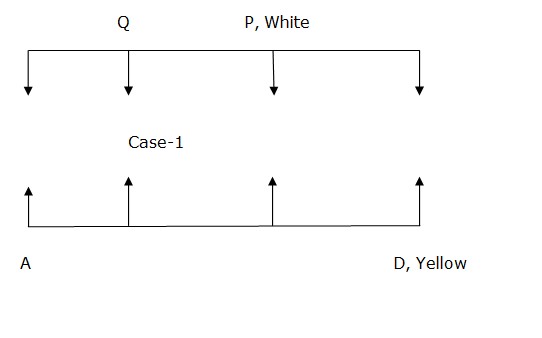
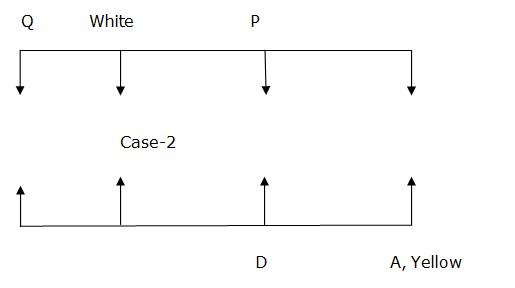 Again we have, C sits second to the left of the one who faces the one who likes red, which is not liked by R. The one who likes green sits to the left of C, who doesn’t like orange. D neither likes blue nor white. As many persons sit to the right of B as to the left of the one who likes orange from the above condition, case 1 gets eliminated. Hence, case 2 shows the final arrangement.
Again we have, C sits second to the left of the one who faces the one who likes red, which is not liked by R. The one who likes green sits to the left of C, who doesn’t like orange. D neither likes blue nor white. As many persons sit to the right of B as to the left of the one who likes orange from the above condition, case 1 gets eliminated. Hence, case 2 shows the final arrangement. 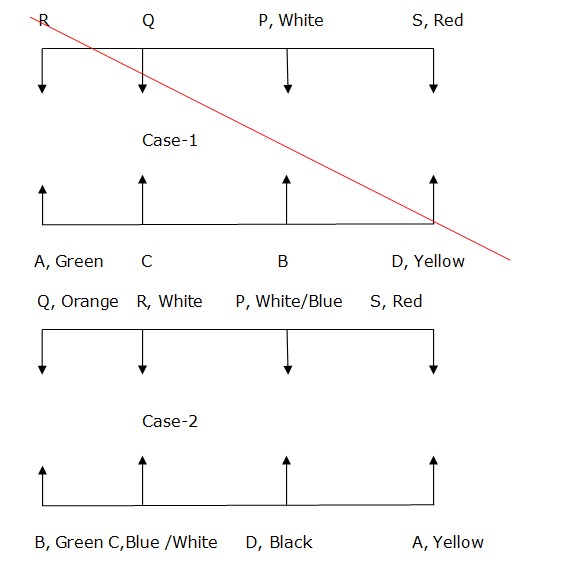 So final arrangment-
So final arrangment- 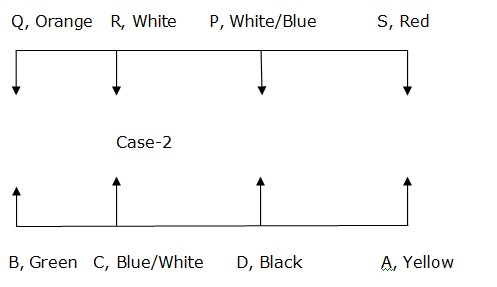
What is the maximum period for which the Central Government may supersede the Authority under IFSCA Act?
Which of the following person are not eligible to apply to the NPS scheme?
What is the minimum net worth requirement for an SFB to transition into a Universal Bank as per the RBI guidelines?
The term 'net 50' implies that the customer will make payment:
How to compute Estimated Profit under a Contract A/C?
Which among the following is NOT a constituent of Tier-II capital of banks according to BASEL Accord?
An independent director can be appointed for a tenure up to ________
When was the first RRB set up?
Given the following information, calculate the Trade Payables Turnover Ratio:
Opening Sundry Creditors: ₹80,000
Opening Bills Payable: �...
What is the feature launched by ICICI Lombard General Insurance for health insurance policyholders to avail cashless facilities at any hospital?
Relevant for Exams:



